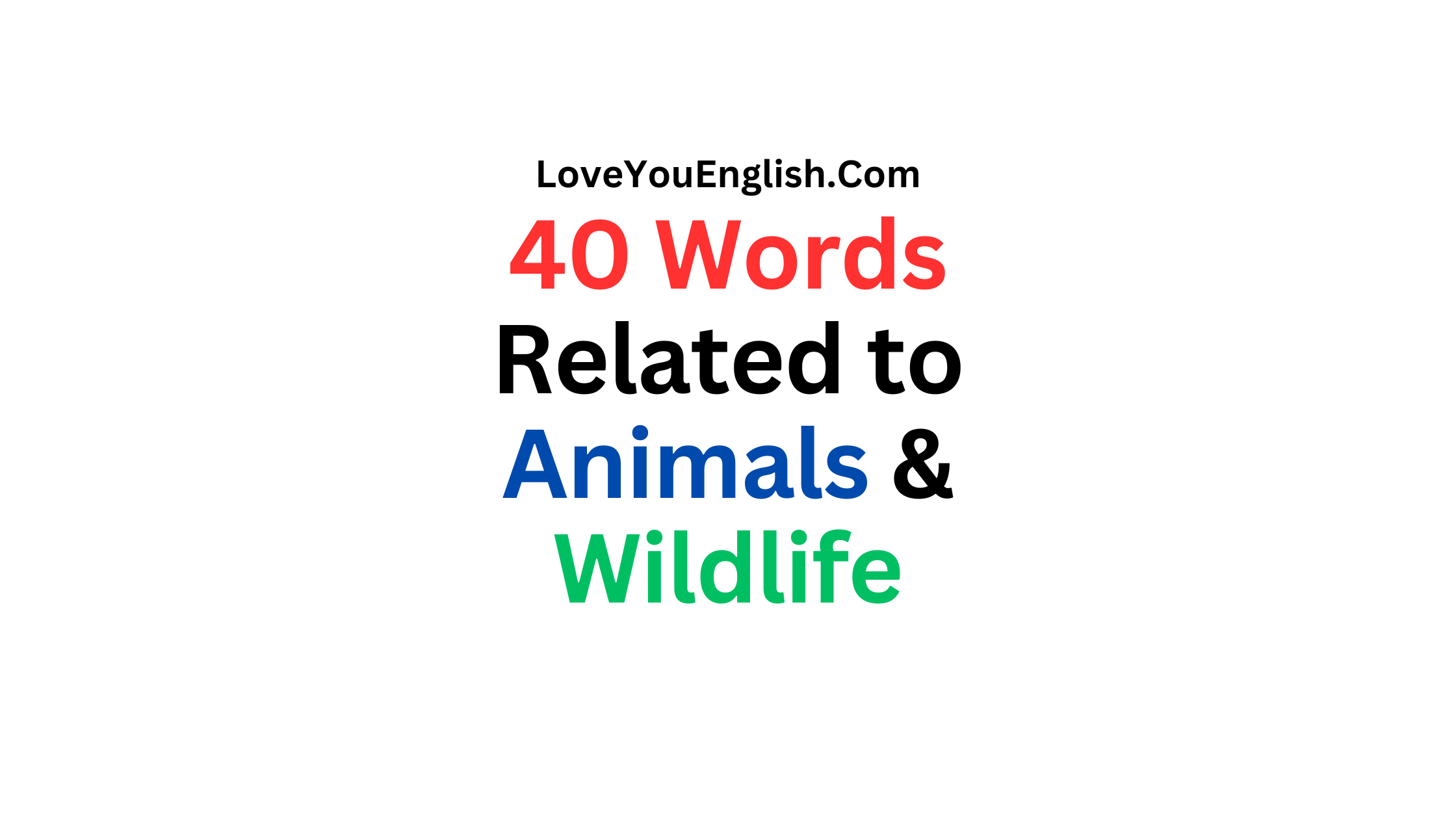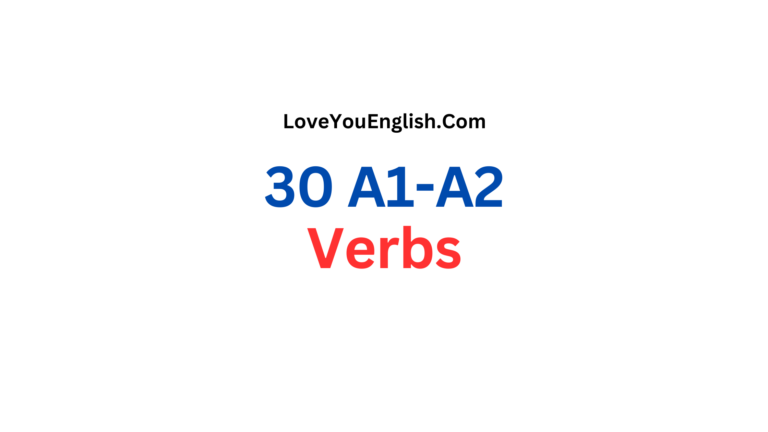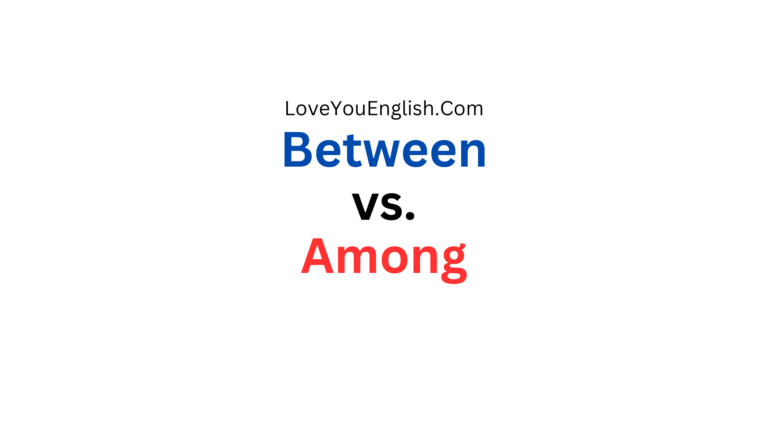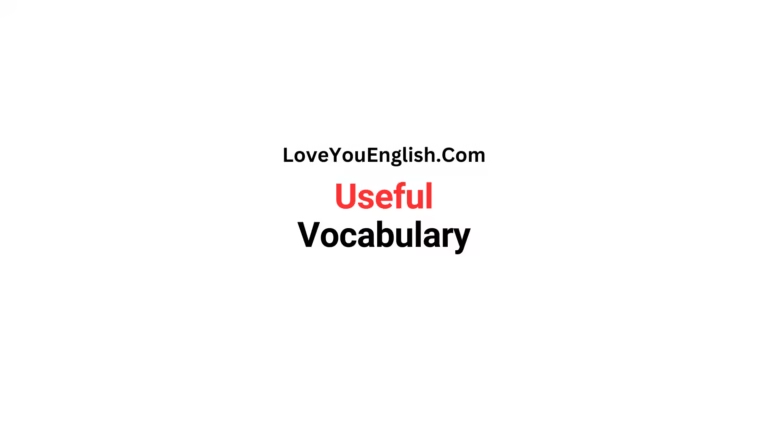Expand Vocabulary: 40 Words Related to Animals and Wildlife
Sharing is caring!
Have you ever stopped to think about the incredible vocabulary we use to describe the animal kingdom?
Our language is rich with words that capture the wonder and diversity of wildlife.
From the tiniest insects to the mightiest mammals, each creature has inspired unique terms that help us better understand and appreciate the natural world.
Mammals
- Nocturnal – Animals that are active during the night and sleep during the day. Bats, raccoons, and owls are nocturnal creatures, using darkness as their time to hunt or forage.
- Hibernate – The state of inactivity and metabolic depression that some animals enter during winter months. Bears famously hibernate, conserving energy when food is scarce.
- Migration – The seasonal movement of animals from one region to another. Wildebeest in Africa make one of the most spectacular migrations, traveling over 1,000 miles in search of fresh grazing.
- Biodiversity – The variety of plant and animal life in a particular habitat or ecosystem. Rainforests contain the highest biodiversity on Earth.
- Extinct – When a species no longer exists anywhere on the planet. The dodo bird became extinct in the late 17th century due to human activities.
- Endangered – Species at risk of becoming extinct. Giant pandas were once critically endangered but conservation efforts have helped their population recover.
- Conservation – The protection and preservation of wildlife and natural resources. Conservation programs worldwide work to save threatened species.
- Habitat – The natural environment where an animal lives. Coral reefs provide habitat for thousands of marine species.
- Ecosystem – A community of living organisms interacting with their physical environment. The African savanna ecosystem includes predators, prey, and plant life all dependent on each other.
- Predator – An animal that hunts other animals for food. Lions are apex predators in their ecosystem.
Birds
- Fledgling – A young bird that has recently grown its flight feathers. Fledglings often leave the nest before they can fly perfectly.
- Plumage – The pattern, color, and arrangement of a bird’s feathers. Peacocks are known for their spectacular plumage.
- Migrate – To move from one region to another with the change of seasons. Arctic terns migrate farther than any other bird, traveling from the Arctic to Antarctica and back each year.
- Clutch – A group of eggs laid at one time. A chicken’s clutch typically consists of 12 eggs.
- Brood – A family of young birds hatched at one time. Mother ducks can be seen leading their broods to water.
Marine Life
- Shoal – A group of fish swimming together. Sardines form massive shoals as protection from predators.
- Cetacean – The scientific order that includes whales, dolphins, and porpoises. Cetaceans are highly intelligent marine mammals.
- Mollusk – A large group of invertebrate animals including snails, clams, and octopuses. Mollusks have soft bodies often protected by a hard shell.
- Crustacean – Aquatic animals with hard shells and jointed legs, including crabs, lobsters, and shrimp. Crustaceans are vital parts of marine food chains.
- Coral – Marine invertebrates that live in colonies and create the structure of coral reefs. Coral reefs support about 25% of all marine species.
Reptiles and Amphibians
- Ectothermic – Animals whose body temperature depends on the environment. Reptiles are ectothermic, often seen basking in the sun to warm up.
- Venom – A toxic substance some animals produce to defend themselves or immobilize prey. Snake venom can be deadly but also has medical applications.
- Metamorphosis – The transformation process some animals undergo during development. Frogs undergo metamorphosis from tadpoles to adult form.
- Hibernation – A state of inactivity and reduced metabolism during winter. Some turtles hibernate underwater, absorbing oxygen through specialized skin patches.
- Camouflage – Physical adaptations that allow animals to blend with their surroundings. Chameleons can change color to match their environment.
Insects and Arachnids
- Exoskeleton – The external skeleton that supports and protects an insect’s body. Beetles have hard exoskeletons that provide excellent protection.
- Colony – A group of insects living together, often with specialized roles. Ant colonies may contain millions of individuals working together.
- Pheromone – Chemical substances released by animals that affect the behavior of others of the same species. Ants leave pheromone trails to food sources.
- Pollinator – Animals that move pollen from one plant to another, enabling fertilization. Bees are among the most important pollinators for food crops.
- Cocoon – A silk covering spun by insect larvae for protection during metamorphosis. Silkworms spin cocoons that humans harvest for silk production.
General Wildlife Terms
- Endemic – Species that exist only in one geographic region. The kangaroo is endemic to Australia.
- Adaptation – Changes in an organism’s structure or behavior that help it survive in its environment. The giraffe’s long neck is an adaptation for reaching tall tree leaves.
- Diurnal – Animals active during daylight hours. Most birds are diurnal, hunting and feeding during the day.
- Omnivore – Animals that eat both plants and animal material. Bears are omnivores, eating everything from berries to fish.
- Herbivore – Animals that feed only on plants. Elephants are herbivores, consuming hundreds of pounds of vegetation daily.
- Carnivore – Animals that feed primarily on meat. Tigers are carnivores with specialized teeth for tearing flesh.
- Scavenger – Animals that feed on dead animals they didn’t kill themselves. Vultures are important scavengers that help prevent disease spread.
- Domestication – The process of adapting wild animals for human use. Dogs were the first animals to be domesticated thousands of years ago.
- Symbiosis – A close relationship between two species where at least one benefits. Clownfish and sea anemones have a symbiotic relationship, protecting each other.
- Biodome – A human-made, controlled environment housing plants and animals from various ecosystems. Biodomes allow scientists to study wildlife interactions.
The rich vocabulary we use to describe wildlife reflects our fascination with the natural world.
Each of these 40 terms helps us understand different aspects of animal life—from behavior and physical characteristics to relationships and survival strategies.
By expanding our wildlife vocabulary, we gain a deeper appreciation for the complex and beautiful world of animals that surrounds us.
Next time you observe wildlife, whether in your backyard or at a national park, try using some of these terms to describe what you see.
You’ll find that having the right words makes the experience even more meaningful and helps you share your observations with others who share your interest in the amazing world of animals.
Read more:
Sharing is caring!








